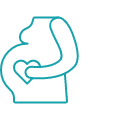
Diseases Treated with Stem Cells and its Potential Applications
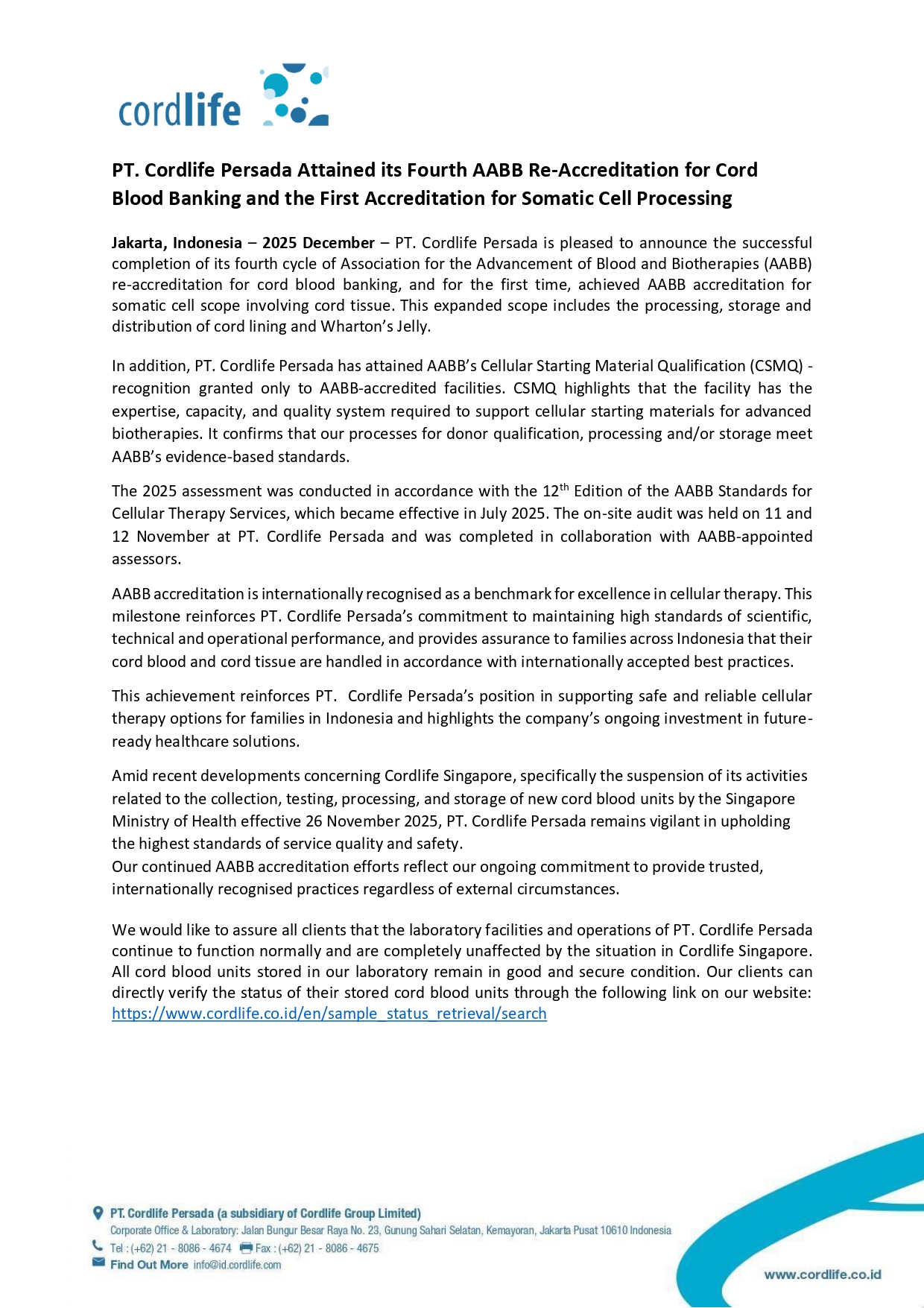
Over 80 diseases1 potentially treatable with cord blood stem cells
Stem cells are at the forefront of one of the most fascinating and revolutionary areas of medicine today. Doctors recognize that stem cells have the potential to help treat numerous diseases by generating healthy new cells and tissue. As a parent, you want to protect your family. At your baby’s birth, you have the unique opportunity to safeguard the health of the ones you love by storing your newborn child’s umbilical cord blood and umbilical cord lining stem cells.
Cord Blood Stem Cells
Stem cells in the blood of your baby’s umbilical cord have the potential to be used in the treatment of many diseases today. Stem cells could be used to treat hematopoietic and genetic disorders. In a stem cell transplant, umbilical cord stem cells are infused into a patient’s bloodstream where they go to work - healing and repairing damaged cells and tissue. With the successful engraftment of the stem cells, the patient’s blood and immune system are regenerated.
The following is a list of some of the diseases that have been treated with cord blood and other sources of similar type of stem cells (Hematopoietic Stem Cell), like bone marrow and peripheral blood. Stem cell therapies continue to change and evolve quickly.
There are a wide range of diseases that are treatable with Hematopoietic Stem Cells (HSCs) from umbilical cord blood, bone marrow, and peripheral blood such as stem cell disorders, acute and chronic forms of leukemia, myeloproliferative disorders, and many more. Stem cell therapies continue to change and evolve quickly.
DID YOU KNOW?
Haematopoietic stem cells or HSCs have been used to treat over 801 diseases.

Blood Cancers
Leukaemia
- Acute Biphenotypic Leukaemia
- Acute Myelogenous Leukaemia
- Acute Undifferentiated Leukaemia
- Chronic Lymphocytic Leukaemia
- Juvenile Chronic Myelogenous Leukaemia
- Acute Myelofibrosis
- B-cell Acute Lymphoblastic Leukaemia
- T-cell Acute Lymphoblastic Leukaemias leukaemia
Myeloproliferative Neoplasms
- Agnogenic Myeloid Metaplasia
- Essential Thrombocythemia
- Polycythemia Vera
- Chronic Myelogenous Leukaemia
Myelodysplastic Syndromes
- Refractory Anaemia
- Refractory Anaemia with Excess Blasts
- Refractory Anaemia with Excess Blasts in Transformation
- Refractory Anaemia with Ringed Sideroblasts (Sideroblastic Anaemia)
- Chronic Myelomonocytic Leukaemia
- Juvenile Myelomonocytic Leukaemia
Other Blood Cancers
- Multiple myeloma
- Plasma cell leukaemia
- Waldenstrom’s macroglobulinemia
Non Malignant Blood Disorders
Anaemias (deficiences or malformations of red cells)
- Aplastic anaemia
- Congenital dyserythropoietic anaemia
- Fanconi’s anaemia
- Paroxysmal nocturnal hemoglobinuria
Hereditary Bone Marrow Failure Syndromes
- Diamond Blackfan Syndrome
- Dyskeratosis Congenita2
- Pearson’s Syndrome
- Shwachman Diamond Syndrome
Inherited Red Cell Abnormalities
- Pure red cell aplasia
- Sickle cell anaemia
- Beta thalassemia major / Cooley’s anaemia
Inherited Platelet Abnormalities
- Congenital Amegakaryocytosis Thrombocytopenia
- Glanzmann’s thrombasthenia

Immune Disorders
Severe Combined Immune Deficiency (SCID)
- Bare Lymphocyte Syndrome
- Omenn Syndrome
- Reticular Dysgenesis
- Neutrophil Actin Deficiency
- SCID with Adenosine Deaminase Deficiency (ADA SCID)
- SCID which is X linked
- SCID with absence of T & B Cells
- SCID with absence of T Cells, Normal B Cells
Neutropenias
- Kostmann Syndrome (Infantile Genetic Agranulocytosis)
- Myelokathexis
Phagocyte Disorders
- Chediak Higashi Syndrome
- Chronic Granulomatous Disease
Inherited Disorders of the Immune System & other Organs
- Cartilage Hair Hypoplasia
- Erythropoietic Porphyria
- Systemic Mastocytosis
Other Inherited Immune System Disorders
- Common Variable Immunodeficiency
- DiGeorge Syndrome
- Hemophagocytic Lymphohistiocytosis
- IKK Gamma Deficiency3 (NEMO Dificiency)
- IPEX Syndrome4
- Leukocyte Adhesion Deficiency
- Wiskott Aldrich Syndrome
- Lymphoproliferative Disorders
- X linked Lymphoproliferative Disease (Duncan’s Syndrome)
- Ataxia-Telangiectasia
Metabolic Disorders
Leukodystrophy Disorders
- Adrenoleukodystrophy
- Krabbe Disease (Globoid Cell Leukodystrophy)
- Metachromatic leukodystrophy
- Pelizaeus-Merzbacher Disease
Lysosomal Storage Diseases
- Niemann Pick Disease
- Sandhoff Disease
- Wolman Disease
Mucopolysaccharidosis (MPS) Storage Diseases
- Hunter Syndrome
- Hurler Syndrome
- Maroteaux Lamy Syndrome
- Mucolipidosis II (I-cell Disease)
- Morquio Syndrome
- Sanfilippo Syndrome
- Scheie Syndrome
- Sly Syndrome (beta glucuronidase deficiency)
Solid Tumors
Tumors
- Hodgkin Lymphoma
- Neuroblastoma
- Non Hodgkin Lymphoma (Burkitt’s Lymphoma)
- Retinoblastoma
- Medulloblastoma
Other Metabolic Disorders
- Lesch–Nyhan Syndrome
- Osteopetrosis
- Hermansky-Pudlak Syndrome
Storing cord blood does not guarantee that the successful application of umbilical cord blood stem cells is dependent on the condition of each individual patient. Banking umbilical cord blood does not guarantee that the cells will provide a cure or be applicable in every situation. The eventual use of the umbilical cord blood can only be determined by the treating physician. Though some of the conditions listed here may be treated with the patient’s own umbilical cord blood (autologous cord blood), it may not be suitable to treat genetic diseases. In such cases, a matching umbilical cord blood from a sibling may be used. However, there is no guarantee that the umbilical cord blood will be a match for every family member or will provide a cure for every condition. Please consult your treating physician for further advice.
In addition to the host of conditions that can now be treated, it is the potential of stem cell treatments that holds the most excitement as research continues to uncover new possibilities. The potential and efficacy of treating diseases with stem cells are real.
References:
1 Diseases treated page. Parent’s Guide to Cord Blood Foundation website. https://parentsguidecordblood.org/en/diseases. Accessed April 23, 2021.
2 Bizzetto R, Bonfim C, Rocha V, et al. Outcomes after related and unrelated umbilical cord blood transplantation for hereditary bone marrow failure syndromes other than Fanconi anemia. Haematologica. 2011; 96(1):134-141.
3 Immunodysregulation polyendocrinopathy enteropathy X-linked (IPEX) Syndrome. Stanford Children’s Health website. https://www.stanfordchildrens.org/en/service/stem-cell-transplantation/conditions/ipex-syndrome. Accessed April 5, 2021.
4 Picard C, J-L Casanova, Puel A, Infectious Diseases in Patients with IRAK-4, MyD88, NEMO, or IκBα Deficiency. Clin Microbiol Rev. 2011; 24(3):490-497.
5 Rao A, Kamani N, Filipovich A, et al. Successful bone marrow transplantation for IPEX syndrome after reduced-intensity conditioning. Blood. 2007; 109(1):383-385.
Tono C, Takahashi Y, Terui K, et al. Correction of immunodeficiency associated with NEMO mutation by umbilical cord blood transplantation using a reduced-intensity conditioning regimen. Bone Marrow Transplantation. 2007;39(12):801-804. doi:10.1038/sj.bmt.1705658.
6 B-cell and T-cell acute lymphoblastic leukemia. Mayo Clinic Laboratories website. https://news.mayocliniclabs.com/hematology/lymphoma/b-cell-and-t-cell-acute-lymphoblastic-leukemia/#:~:text=Acute%20lymphoblastic%20leukemia%20accounts%20for,2%E2%80%935%20years%20of%20age. Accessed August 28, 2023.
Clinical trials
With the advancement of stem cell* research, the potential for future use of stem cell grows. Below is a list of diseases currently under Clinical Trials. These are diseases for which stem cell* treatments appear to be beneficial, but have not been adopted as standard therapy. For some of these diseases, stem cell transplants only slow the progression of the disease, but do not produce a cure. For other diseases, stem cell treatments may help effect a cure, but further research is needed to determine the best candidate patients for stem cell therapy, the optimum stem cell dosage, the optimum method of cell delivery, etc.
For some patients, clinical research trials represent an avenue for receiving promising new therapies that would not otherwise be available. Patients with difficult to treat or currently "incurable" diseases, such as AIDS or certain types of cancer, may want to pursue participation in clinical research trials if standard therapies are not effective. Clinical research trials are sometimes lifesaving.
For the latest information, please visit www.clinicaltrials.gov

Auto-Immune Disorders
- Alopecia Areata
- Amyotrophic Lateral Sclerosis (ALS)
- Crohn’s Disease
- Eczema (Atopic Dermatitis)
- Graft-versus-Host Disease (GvHD)
- Lupus
- Multiple Sclerosis
- Psoriasis
- Rheumatoid Arthritis
- Systemic Sclerosis
- Ulcerative Colitis
Genetic and/or Metabolic Disorder
- Aging Frailty
- Duchenne Muscular Dystrophy
- Epidermolysis Bullosa
- Gaucher’s Disease4
- Hereditary Ataxia
- Lysosomal Storage Diseases
- Metabolic Syndrome
- Severe Combined Immunodeficiency
- Spinal muscular atrophy
- Tay-Sachs Disease
Cardiovascular
- Acute Myocardial Infarction (Heart Attack)
- Cardiomyopathy
- Critical Limb Ischemia (CLI)
- Heart Failure
- Hypoplastic Left Heart Syndrome2
- Ischemic Heart Disease3
- Peripheral Arterial Disease (PAD)
- Surgery for Congenital Heart Defects
Orthopedic
- Ankylosing Spondylitis
- Cartilage Injury
- Cleft Palate Repair
- Non-Union Fractures
- Osteoarthritis
- Osteochondral Lesion
- Spinal Fusion Surgery
Diabetic
- Diabetes, Type 1 (Auto-Immune)
- Diabetes, Type 2
- Diabetic Foot Ulcer
- Diabetic Peripheral Neuropathy
Neurologic Disorder
- Alzheimer’s Disease
- Autism
- Cerebral Palsy
- Encephalopathy
- Global Developmental Delay
- Hearing Loss (acquired sensorineural)
- Intraventricular Hemorrhage
- Parkinson’s Disease
- Spinal Cord Injury
- Stroke
- Traumatic Brain Injury

Others
- Acute Respiratory Distress Syndrome (ARDS)
- Bronchopulmonary Dysplasia (BPD) (lung disorder due to premature birth)
- COVID-195
- Erectile Dysfunction
- Eye Diseases
- Fistula
- HIV
- Kidney Failure
- Liver Cirrhosis
- Liver Failure
- Ovarian Cancer6
- Peyronie’s Disease
- Premature Ovarian Failure
- Testicular Tumour7
- Uterine Scars
- Wounds
*The clinical trials listed above may be using other cell lines, and not only haematopoietic stem cells.
References:
1 Therapies in clinical trials page. Parent’s Guide to Cord Blood Foundation website. https://parentsguidecordblood.org/en/diseases#trial. Accessed June 14, 2021.
2 ClinicalTrials.org registry… NCT01883076, NCT03431480, NCT03779711. Last accessed 5 April, 2021.
3 Umbilical cord derived mesenchymal stem cell therapy in ischemic cardiomyopathy. ClinicalTrials.gov website. https://clinicaltrials.gov/ct2/show/NCT01946048. Accessed April 5, 2021.
4 ClinicalTrials.org registry… NCT00176904, NCT04528355. Last accessed 5 April, 2021.
5 Mesenchymal stem cells and COVID-19: Cure, prevention, and vaccination. Hindawi.com website. https://www.hindawi.com/journals/sci/2021/6666370/. Accessed June 14, 2021.
6 Cady C., McAsey M., Li J. Progress towards a stem cell based therapy for ovarian cancer – Proceeding of the STEMSO Conference.
https://www.longdom.org/open-access/progress-towards-astem-cell-based-therapy-for-ovarian-cancer.pdf. Accessed June 2, 2021.
7 High-dose chemo & stem cell transplant for testicular cancer. American Cancer Society website. https://www.cancer.org/cancer/testicular-cancer/treating/high-dose-chemo-stem-cell.html. Published May 17, 2018. Accessed June 6, 2021.
DCR No. 2589, QR 1.1-1-1-b, August 2023
Getting Started
INTERNATIONAL ACCREDITATIONS AND CERTIFICATIONS
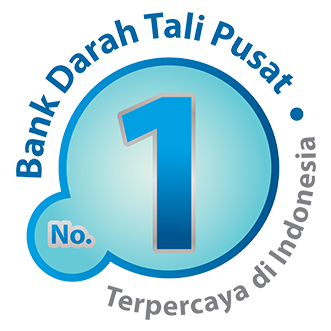
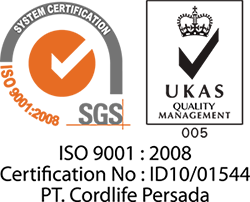


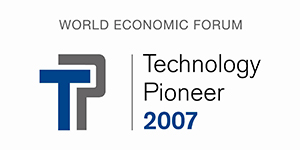
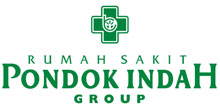
PT Cordlife Persada becomes First Cord Blood Bank in Indonesia to Achieve Global AABB Accreditation
About PT Cordlife Persada
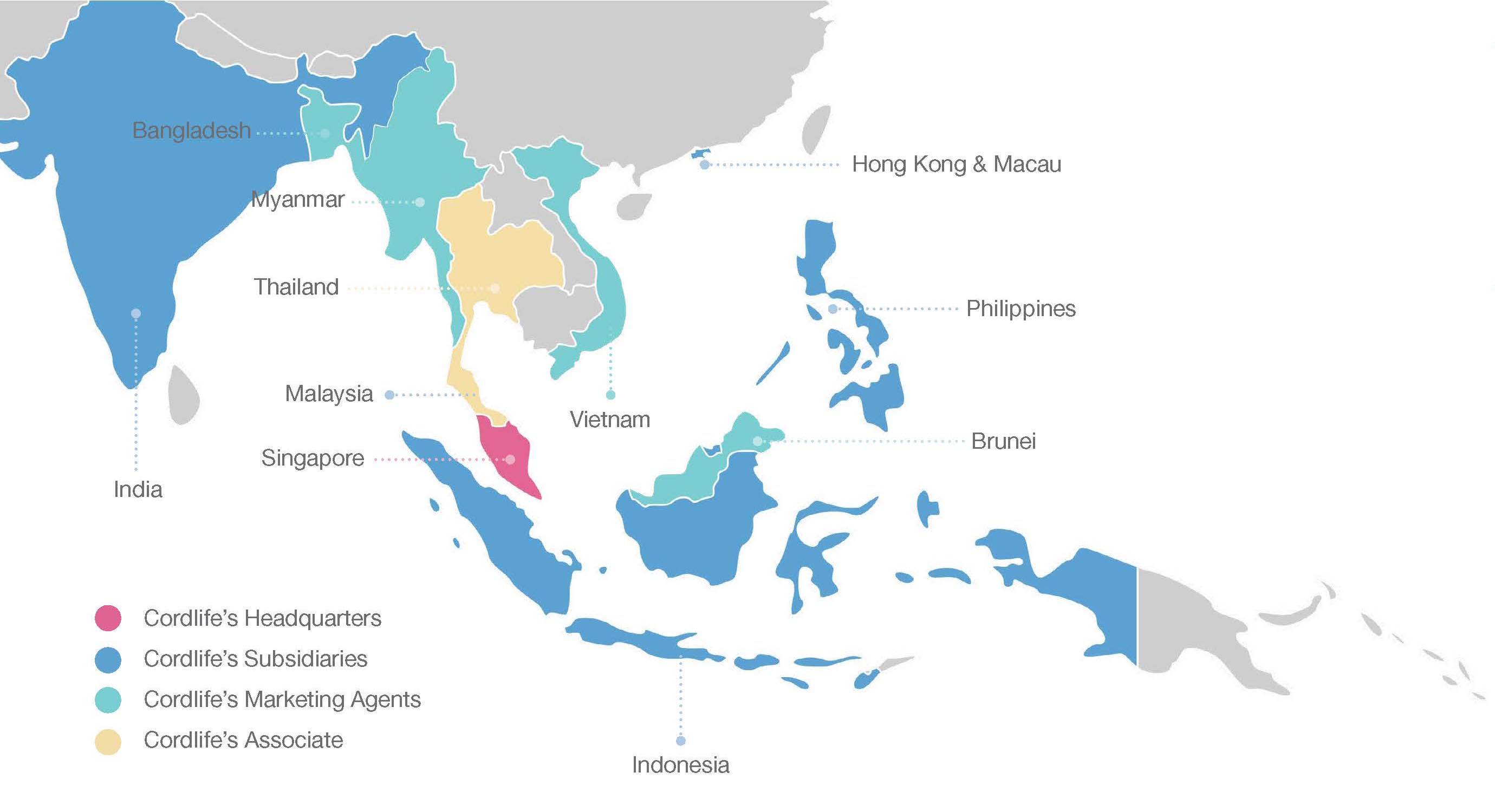
- There are more than 600,000 parents* who have entrusted their baby’s umbilical cord blood stem cells to Cordlife making it the largest cord blood banking network in Asia.
- Cordlife Group Limited, a Singapore Exchange Mainboard-listed company since 2001, has presence in several Asian countries including Singapore, Philippines, Hong Kong and Macau, India, Indonesia, Malaysia, Thailand, Myanmar, Vietnam, Bangladesh, and Brunei.
- PT Cordlife Persada, a subsidiary of Cordlife Group Limited, is first and only DEPKES licensed registered facility, ISO 9001:2008 certified, and AABB-accredited facility in the country with services such as umbilical cord stem cell banking, non-invasive prenatal test (NIPT), and genetic testing.
- AABB (Association for the Advancement of Blood & Biotherapies) is an international, not-for-profit association representing individuals and institutions involved in the fields of transfusion medicine and biotherapies. Major centers here and abroad require cord blood units from AABB-accredited facilities.
*As of May 2022, based on consolidated figures of Cordlife Group Limited and its associates.



